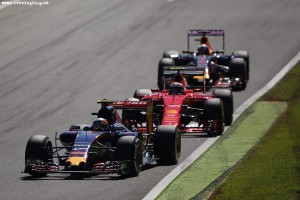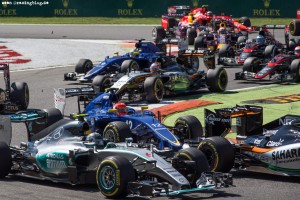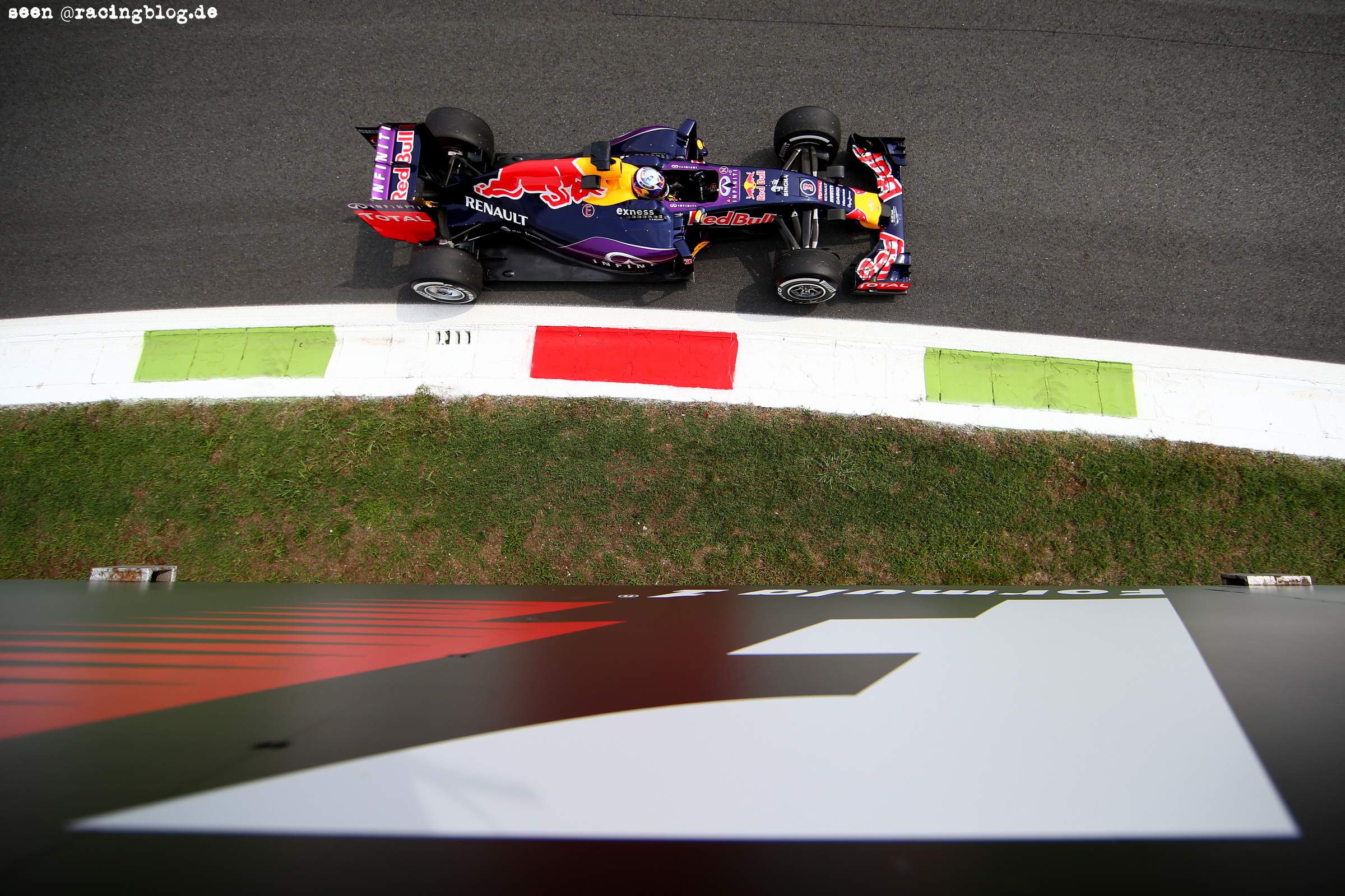On the face of it an Italian Grand Prix based on predominantly one-stop strategies is fairly straight-forward to analyse, but there were some interesting decisions made on Sunday, which affected the result and the outcomes for several drivers, including great recovery drives by Kimi Raikkonen and Daniel Ricciardo.
With the choice of soft and medium tyres this year for the first time (instead of medium and hard) Pirelli was hoping to increase the strategy options beyond the normal one-stop plan. But teams were well prepared for it and – as a stop at Monza costs a massive 22-24 seconds – they were highly motivated to do the race in one-stop.
It was achieved, albeit several cars were on the limit at the end of each stint on tyre performance.
After the tyre failures in Spa, the subject of tyre pressures was central to the story in Monza. Teams were given a raised minimum pressure to apply to the tyres and this meant more sliding and less grip out of slow corners and higher degradation.
The Great Recovery #1: Raikkonen goes from second to 22nd to 5th
 Starting on the front row of the grid for the first time since 2013, Kimi Raikkonen had a chance to win the Italian Grand Prix for Ferrari, if he could have got ahead of Lewis Hamilton at the start. Although Hamilton had half a second a lap pace advantage over the Ferrari, that might not have been enough to pass Raikkonen if the Ferrari man got ahead.
Starting on the front row of the grid for the first time since 2013, Kimi Raikkonen had a chance to win the Italian Grand Prix for Ferrari, if he could have got ahead of Lewis Hamilton at the start. Although Hamilton had half a second a lap pace advantage over the Ferrari, that might not have been enough to pass Raikkonen if the Ferrari man got ahead.
Sadly for the Finn, he did not get away off the line cleanly and was passed by the entire field into Turn 1. His drive to finish fifth was impressive and owed a lot to good recovery strategy by Ferrari. The optimum strategy was to pit off the soft tyres on Lap 26 and then do 27 laps on mediums to the end. Ferrari deliberately did not do this, pitting Raikkonen two laps later on L28, which was a sub-optimal strategy as it meant that he came out behind Ericsson and Hulkenberg and then had to re-pass them on the track. If he had come in on Lap 26 he had a gap to them and would have come out of the pits ahead.
So why did they do this?
The answer is because they were using Raikkonen as a foil against the challenge of Rosberg on their best-placed driver, Sebastian Vettel.
Rosberg at this stage was on eight lap-old medium tyres and was two seconds per lap faster than Raikkonen. Vettel meanwhile had pitted on Lap 25 and was just two seconds ahead of Raikkonen at the start of Lap 26.
By staying out those two extra laps Raikkonen gave Vettel both immediate protection from Rosberg and helped his teammate build a cushion of five seconds, as Rosberg lost time behind the Finn. It was clever and perfectly legal and showed great composure on the pit wall at a tense moment in the race.
Ferrari did a good job in Monza, a race where it was vital for them to do so. The upgraded engine gave them an extra 10hp in qualifying mode and the car had impressive corner speeds. The only interesting point to note was that Vettel had high tyre degradation at the end of both stints.
The Great Recovery #2: Ricciardo makes a reverse strategy work for points from the back row of the grid
 Three years ago Sergio Perez pulled off a contra strategy, starting on the harder tyre and trying to pass cars later in the race on the faster tyre.
Three years ago Sergio Perez pulled off a contra strategy, starting on the harder tyre and trying to pass cars later in the race on the faster tyre.
It didn’t work last year for those who tried it, but this year Daniel Ricciardo did an excellent job to get an 8th place finish in a not particularly fast Red Bull car, having started 19th on the grid on new medium tyres.
As in Spa, Ricciardo made an excellent start; he gained six places on the opening lap, placing him 13th in the early stages. He picked off the McLarens of Alonso and Button and the Toro Rosso of Carlos Sainz, putting him 10th before the main field did their pit stops.
By running the medium tyre for a longer first stint, he made it to Lap 30, at which point he was in seventh place. His target was to get ahead of Nico Hulkenberg and Marcus Ericsson, who again showed good pace in the Sauber.
Red Bull held him out a couple of laps longer than appeared ideal, as his lap times dropped into the 1m 30s, but it meant he had good pace at the end of the race, when Ericsson was struggling on 35 lap old Mediums.
What is interesting about this is the balance the strategist has to strike between losing time at the end of a stint by doing a lap or two too many against having strong pace at the end of the race. Ricciardo caught and passed Ericsson before the end but ran out of time to get Hulkenberg.
In hindsight stopping a lap earlier would have given him another 1.5 to 2 seconds, which might have made the difference in passing Hulkenberg for 7th. But it’s very hard to judge that at the time you are making the decision.
Could Williams have played it smarter against the undercut by Rosberg’s Mercedes?
 The final note is on the classic undercut, pulled off by Mercedes and Nico Rosberg on the Williams drivers Felipe Massa and Valtteri Bottas. Had Rosberg’s engine not failed at the end, it would have been a podium-winning move.
The final note is on the classic undercut, pulled off by Mercedes and Nico Rosberg on the Williams drivers Felipe Massa and Valtteri Bottas. Had Rosberg’s engine not failed at the end, it would have been a podium-winning move.
Rosberg lost position to the Williams drivers at the start, as he had to steer around the stationary Ferrari of Kimi Raikkonen.
As they approached the first round of stops, Rosberg closed up to the Williams pair, running together as they so often do with Massa ahead. Williams knew what was coming – the undercut. Rosberg pitted on Lap 18, came out on new medium tyres and when Williams reacted pitting Massa, both drivers lost position.
So could Williams have done anything differently to counter this and why didn’t they? Clearly if Massa had pitted on Lap 18 he would have pre-empted the undercut; if Rosberg followed him into the pits, Massa would have retained position. Of course Mercedes would not have done that; they would have run Rosberg longer, but it would have made life much more difficult for Rosberg and Bottas could have played a team game to help it work.
Williams must have felt that Lap 18 was too early for them to pit and make it to the end competitively on the medium tyres.
Once they saw Rosberg had pitted and looked at the first sector of his out lap, they knew from the data that they’d lost the position, so the better strategy would have been to stay out and try to get an offset for later in the race. By pitting Massa to cover him, they gave the place away. This was made even easier by a slow pit-stop from Williams.
What is interesting is that, by not pre-empting the undercut it looked like they considered that they weren’t really racing Rosberg. But on the other hand, by reacting to his stop, their move showed that they thought they were.
It is all part of Williams’ development operationally and strategically.


